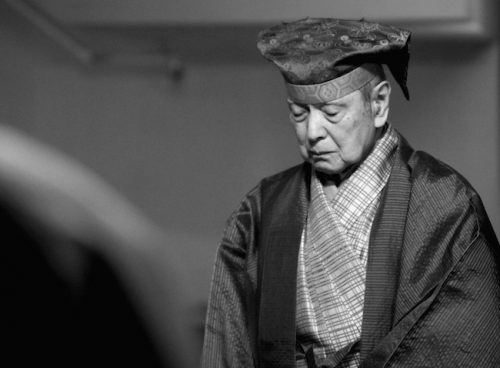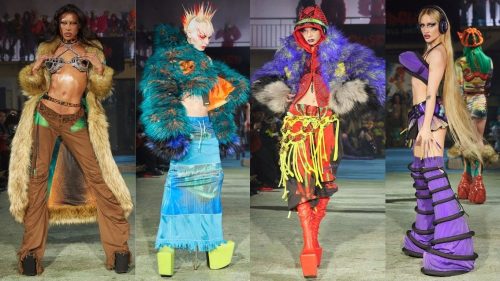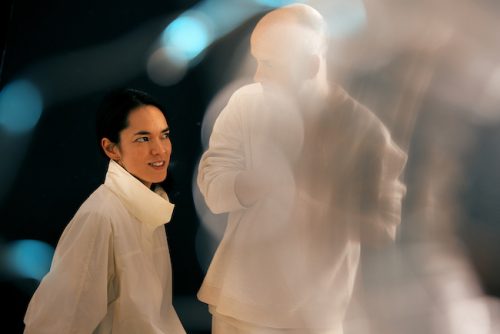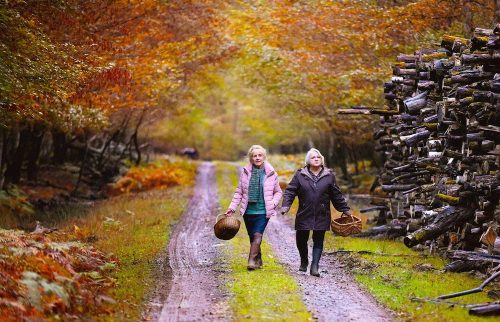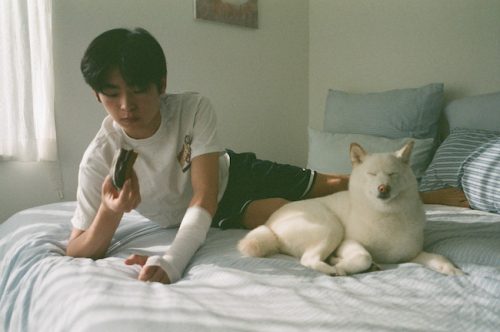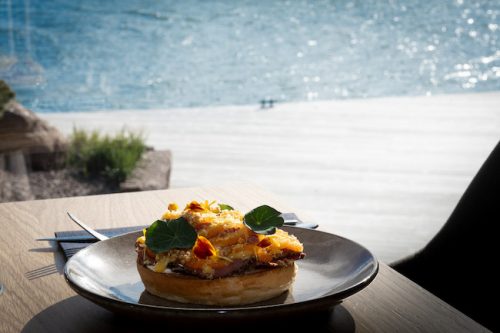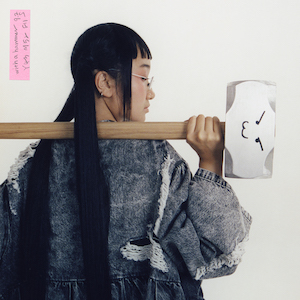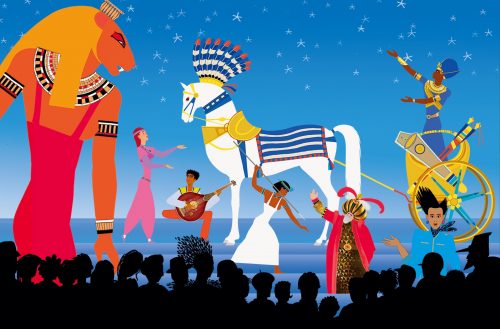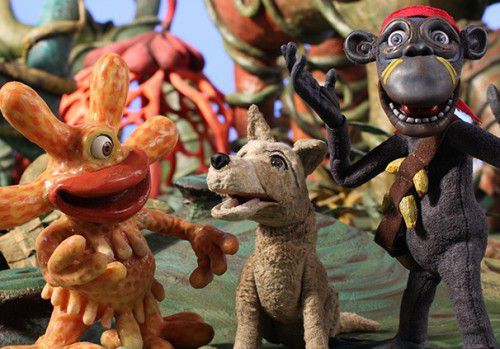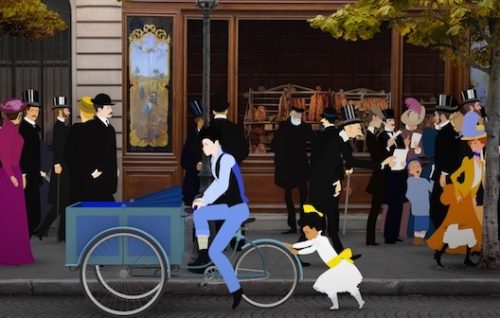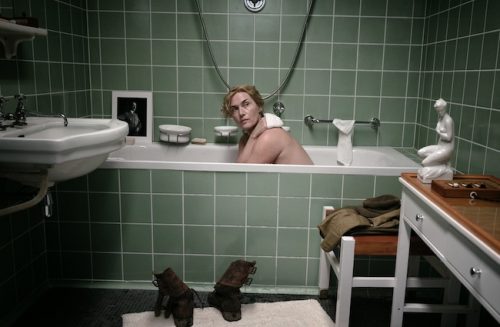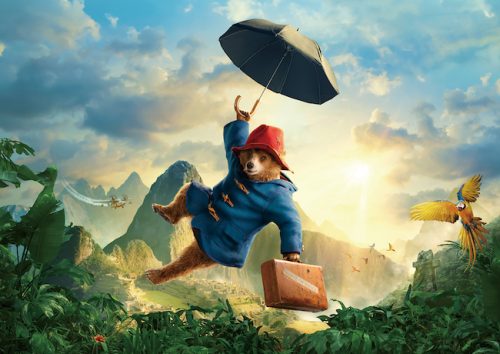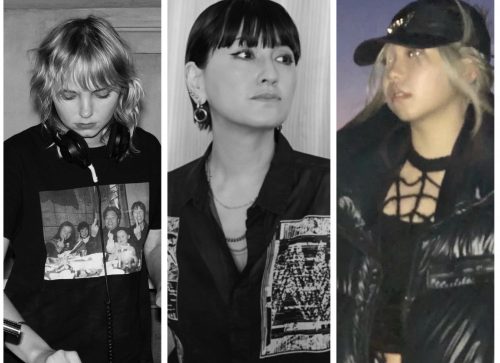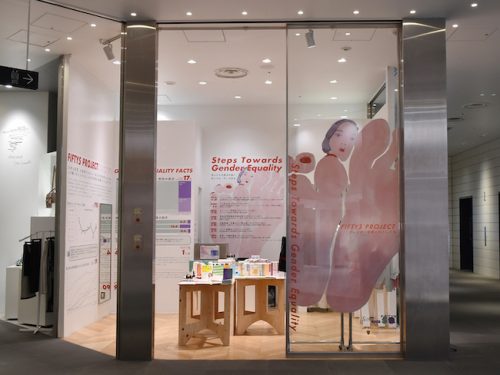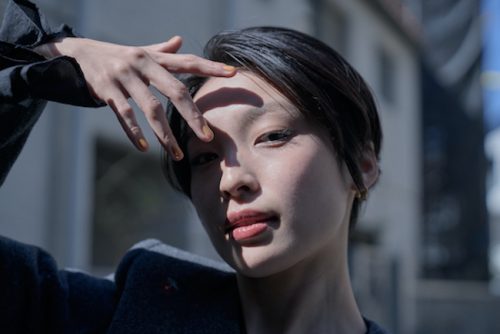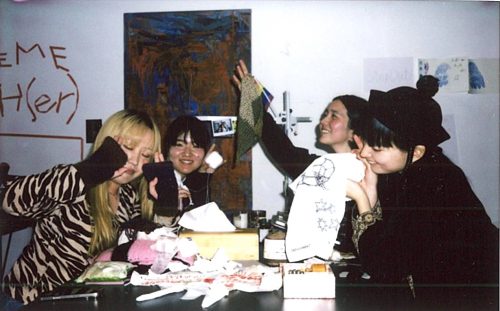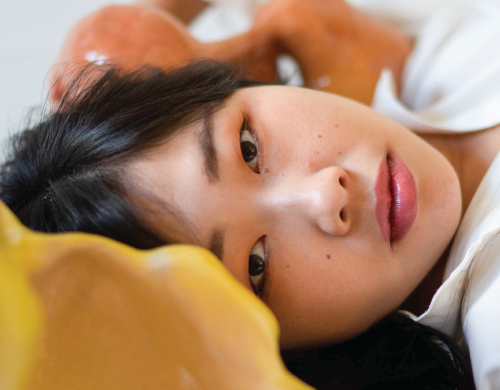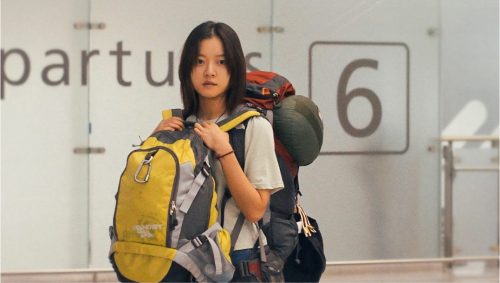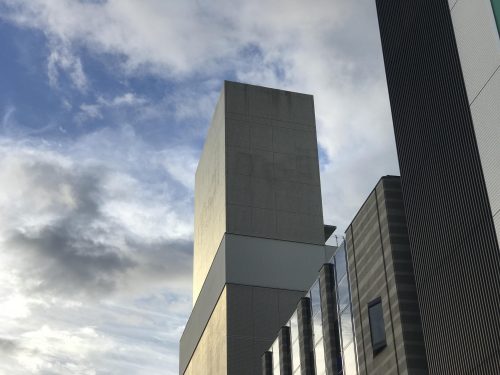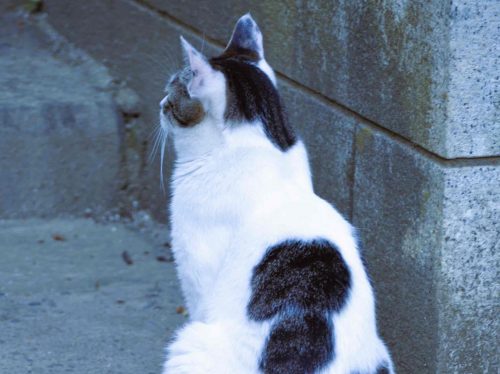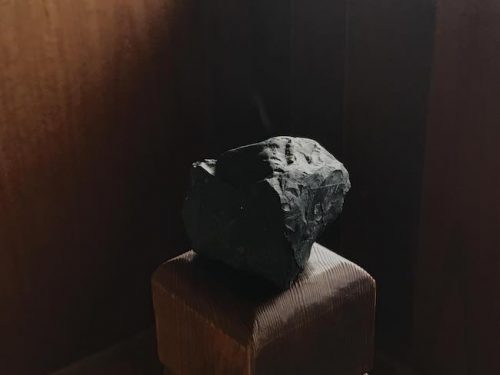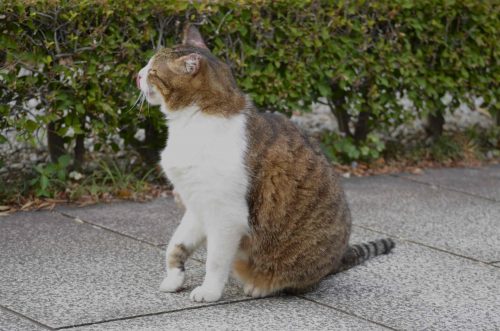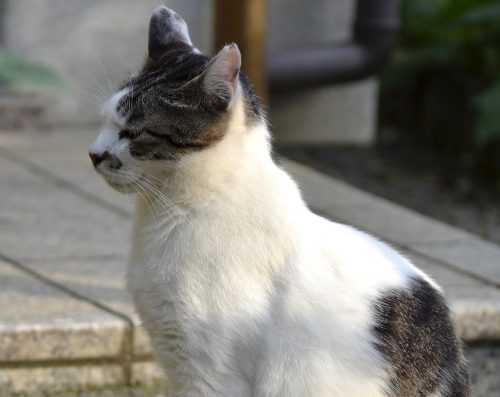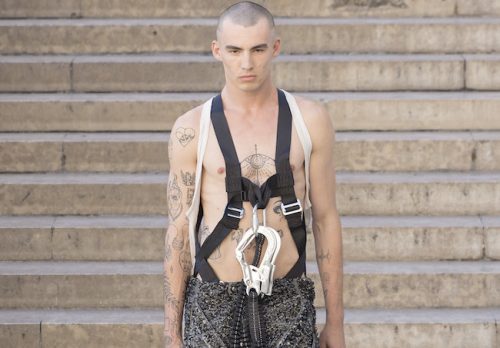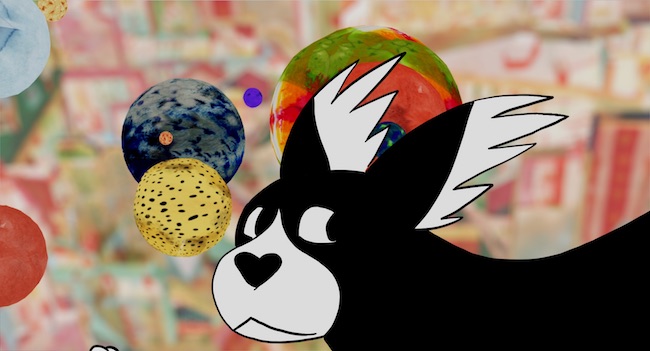
“Marona’s Fantastic Tale” is an excellent film. Distinct visuals were used to depict how the world is seen through the eyes of a dog. It provoked thought about what we are and what happiness means to us. The film is a masterpiece, about adventure, love, and way of life. We got an opportunity to have an interview with Director Anca Damian.
ーーIn both of your films, “CRULIC- THE PATH BEYOND” and “Marona’s fantastic Tale”, the film starts with the protagonist reflecting on their life after death. What is the reason you start the film this way?
Anca Damian:Yes, I started to write both scripts with this sequence. I somehow followed a construction that I also used at “Crulic – The Path To Beyond”. It is in the first five minutes that he toughest part caught the audience, so the sour bite is taken. You look at all the film knowing that each second of the life is precious as the life on earth is limited.
ーー“CRULIC-THE PATH TO BEYOND” and “The Magic Mountain” are both documentaries made by animation. They talk about society. Although this film was inspired by real-life, it has more fictional elements. In doing so, what were the differences in the filmmaking and writing for this film?
Anca Damian:“CRULIC-THE PATH TO BEYOND” is from the same vibe as “The Magic Mountain” – a real character, who is no longer alive and my vision of the life in the light of the death. I tried to be honest to them, not to harm their memory as they were real persons, but while making these films was not centered to the reality, I was centered to the meaning of it. Marona was also inspired by reality, and also the vision of doing it roots in life. But I could play with more personal things, the world of Marona is my world so I could organize the script as the film, with more freedom.
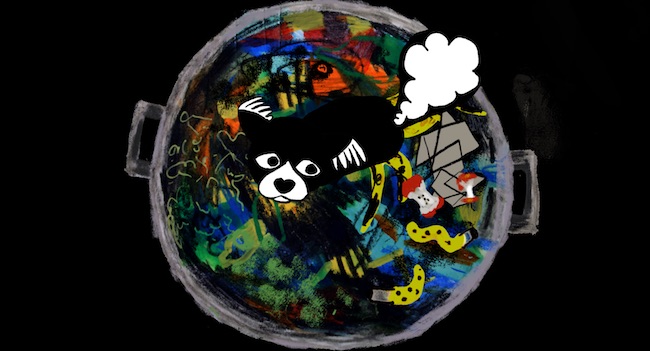
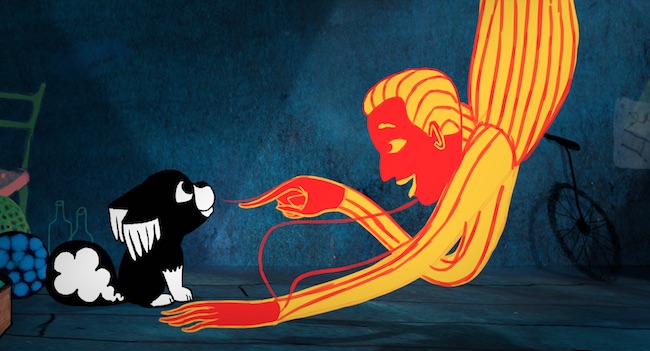
ーー“Marona’s Fantastic Tale” is inspired by your previous experience. Please tell us about the experience and how you transformed it into a feature film.
Anca Damian:One day when I was out walking, a stray dog followed me. This dog had something so pure and I couldn’t stand the idea of leaving it out there on the streets. I tried to find a foster family for it, and every time that dog changed the dynamics within those families, its presence had an impact on the internal relationships. I realized that through this dog I could tell a story about how people relate to each other. It got the name Marona, meaning “brown” in Romanian. We decided to change its looks in the film, but kept the same name, as a tribute.
ーーIn this process of making this film, what was the main point you wanted to communicate?
Anca Damian:The Buddhist wisdom of being in “here and now”, live the present, without thinking at the future or at the past, seems easy but it is so difficult to achieve as a human being; for dogs, is much easier, as they live “in here and now”, every day.For me dogs are teachers, they teach us how to be.
ーーYour son, Anghel Daiman, was the scriptwriter for this film. To reach a common understanding, what discussions did you have?
Anca Damian:The idea of this story is mine: it was inspired by a real dog that I saved in 2014, Marona, who is still alive. As I was working on another project, I didn’t had time to write it, and my son joined me in this adventure: I told him the structure of the story – in episodes, and also the inspirational real persons that were involved in the real story that I lived. Of course, he added things from his imagination, it was a wonderful collaboration and I was very happy as it was the first script he wrote. As he knows me and what I want from stories he was the perfect collaborator in writing; at the end I edited the script before entering in the production, cut or moved some scenes, but that was all. It was the perfect artistic symbiose of the vision I had on the film and the scriptwriter creative process that he did by himself.
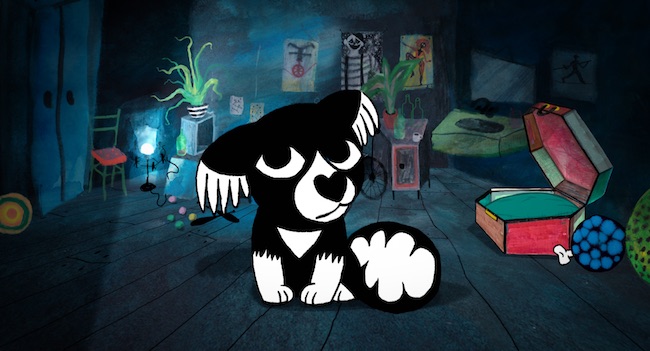
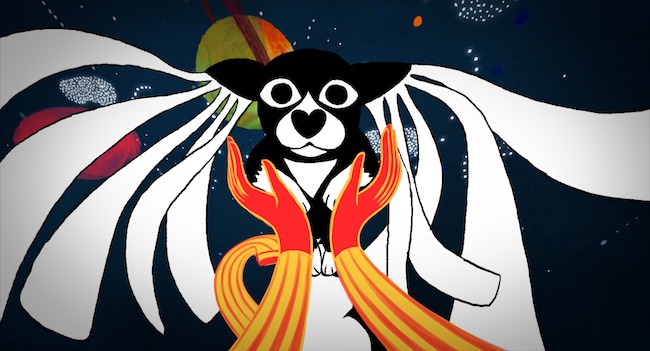
ーーThis film looks at freedom and love with no return. On the other hand, being passive about self-sacrifice could hinder one’s freedom. What do you think about that balance?
Anca Damian:I think that we must be true with ourselves: the life is a love lesson and each life is unique, and has its song of love. How much we give others, what is the limit – it is a personal choice, and those who are rich inside are mirroring just love and have a lot to give.
ーーThe film makes us think about how to live and what is important. What is happiness, to you?
Anca Damian:Of course, the film in the first place should be entertaining, but for me art should give a message, should aim to change the world. There are so many topics that we can address. MARONA tells about happiness. What is the happiness we are pursuing all our lives? For this film death is a starting point, but it is a story about life. What is the main lesson we should learn while living is a love lesson; we are born to understand that this is the only thing that matters.
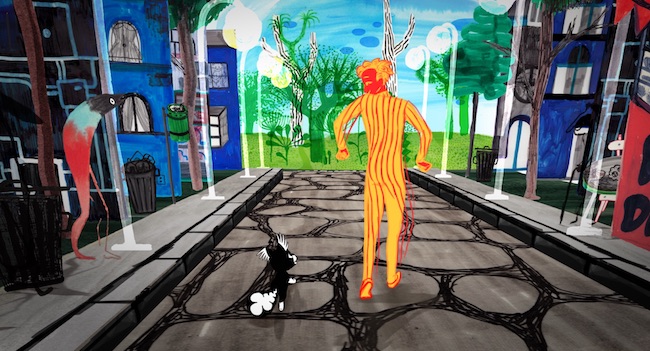
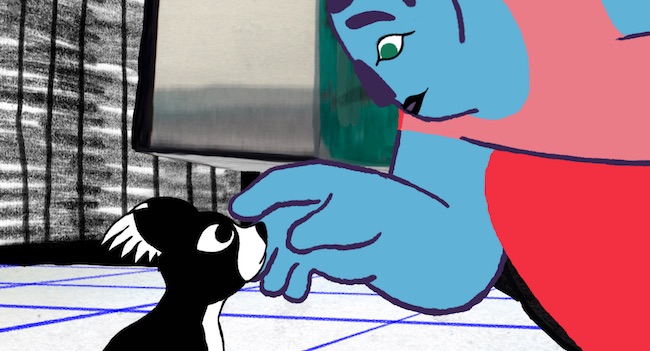
ーーCompared to your previous two films, “Marona’s fantastic story” has a brighter colour tone. At first sight, the imagery seems peaceful, but they are placed in complex compositions just like a pop-up book. What were the new challenges for this film?
Anca Damian:The challenge here was to bring the visuals to mirror the concept, in a creative and unique way. I worked with three artists. Brecht Evens was the character designer and visual consultant on the project. He has this unique style of using the color and shape apparently connected to reality but decomposing it in a magnificent meaningful way. Gina Thorstenesen and Sarah Mazzetti are also brilliant artists and I enjoyed sharing tasks knowing their complementarity in tasks.
Manole’s house and his surroundings are governed by totally subjective spaces, inspired by children’s dreams, borrowed from poetry where anything can happen. The subjectivity and emotion of the story lead to a world reduced to the bare essentials in terms of form, a world where linear perspective has been replaced with subjective perspective, where form is the reflection of the interior. Drawing will highlight the important elements of the scene. Colours are pure and chromatic contrasts highly pronounced. Space in the film does not follow the rules of linear perspective. The city, for example, follows several points of view within one and the same image: several perspectives meet to organise space in the story.
The house under construction, during the Istvan section, reflects construction of the relationship between them. At first, we see blue lines, and then, like Lego, the house appears. Istvan’s apartment, on the contrary, is governed by highly constraining rules, like those that we have to submit to during adolescence, when we can’t find our place and don’t feel understood. At Manole’s everything was possible; here there is no place for dreaming. Highly rigid and geometrical, the space is physically flat, without any way out, and all the elements follow this narrow line. This space is that of his wife, Madalina, a representation of what she is in the deepest part of herself.
Between the Manole and Istvan’s flats, lies that of Solange, where the rule of thumb is: ACCEPT THINGS SUCH AS THEY ARE. Here, each character has his or her own space: to each, their own little island, associated with their own personality. When Solange takes a bus and goes around the town, the town and buildings were designed like a real pop-up book. I wanted that while we are entering in the 4th dimension of memories, to have this anamorphic effect, and I discussed with the 3D animators to map the city on the volumes, to feel physically that we enter in other space in time. Gina Thorstensen was here in close contact with the animators in constructing the city.


ーーYou emphasize real-life research. For instance, in your previous film, you stayed in Afghanistan for two weeks. For this film, you visited Cirque du Soleil to look at movements of the acrobats. What are other forms of research you conducted?
Anca Damian:I was always sharing references with animators, from footage with dogs to acting refences from films and images from Pinterest. Life is also a huge source of inspiration. For instance, the emotions and impressions that I live “for real” give me energy.
ーーWhat is your own “magic” when it comes to transforming real-life to animation?
Anca Damian:Animation allows us to see the meaning of reality, not just the appearance. I think all the techniques are meant to give you freedom, and the only limitation s the needs of the story. Through animation the storytelling receives more layers of information, you can decode through visuals deep metaphysical levels.
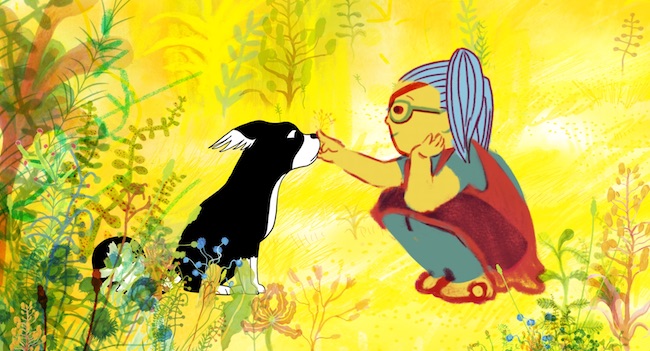
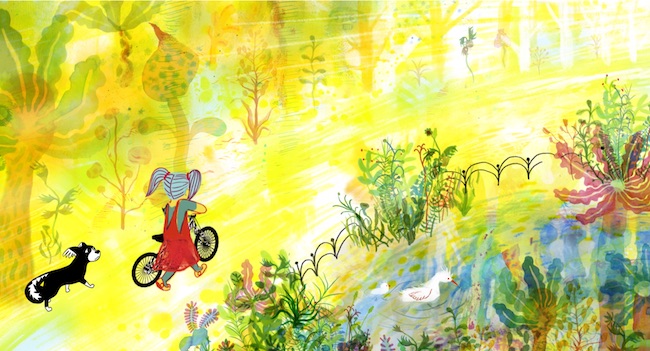
ーーWhat was the intention behind Marona being a female?
Anca Damian:When I was writing about Marona story in the director’s note of intent that the film is a kind of “The Girls and The World” story. In Alé Abreu’s film the boy was searching his father and he started to know the world from this search, but Marona knows the world through her emotion, it is the feminine way of relating through the heart chakra.
ーーYour artistic exploration led you to make animations. How do you think aspects of fine arts, for instance, Surrealism, are reflected in animation?
Anca Damian:The animation gives total freedom to create the story completely from my mind and subconscious. It is a cinematographic tool that I am using despite the rules of the techniques to reinvent the grammar of storytelling. I am convinced that the world is energy. The the appearance, the “realism” how we call it is in fact just a frame of the energy that is shifting all the time so the Surrealism is closer to the world reality. Animation is also image in time, so the energy can be made visible.
ーーSimilar to you Michel Ocelot and Hayao Miyazaki are also using animation as a medium to explore deep subjects. Do you have any films by animators/ film directors that you are influenced by?
Anca Damian:I was always inspired by other animators and film directors, the art is inspiriting and universal, and I had more “Masters”, I can name some but they are different and some films of them were stronger than the others but I think that the feeling that we are not alone, everything is connected come also from the art community with no boundaries of time and space.
ーーWe saw you like films by Akira Kurosawa. What did you learn from his work?
Anca Damian:I learned a lot from the master of cinema Akira Kurosawa; but the most important lesson is to build a film in layers, so all the audience get something. The Seven Samurai can be seen as an adventure film, and there is no problem if people have this reading, but in fact the film is about initiation, enlightenment and those who are prepared with get its true level, but the film is meant to give to everyone something.
ーーThere is little opportunity to learn animation in Romania. Do you plan on creating that space?
Anca Damian:I am already doing it with the teams of my films.
ーーYou are the only female director in Romania. Until recently women could not use public transport facilities without the permission of a man. Likewise, men are allowed to divorce women who don’t cook. There is a prominent hierarchy between male and female. In such an environment, what do you keep in mind to survive as a female director? If you can share an incident when you particularly felt this way.
Anca Damian:I am focused on what I want to say through my films, on my work as an artist, on my own evolution. I always think that we can do anything we think is important and meaningful for us if we put our energy constantly in it. I am also a mother, and motherhood is a challenge for our professional work, because we put also part of energy in raising the child. I got used to not take into account the men-women hierarchy and stereotypes of the society, even if they are obvious, and makes women lives harder, but I do the things I want, as at the end of the day this is what makes us happy and leaves the traces of us in the world.
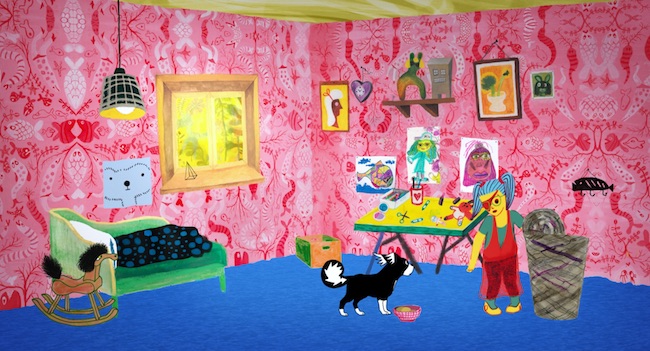
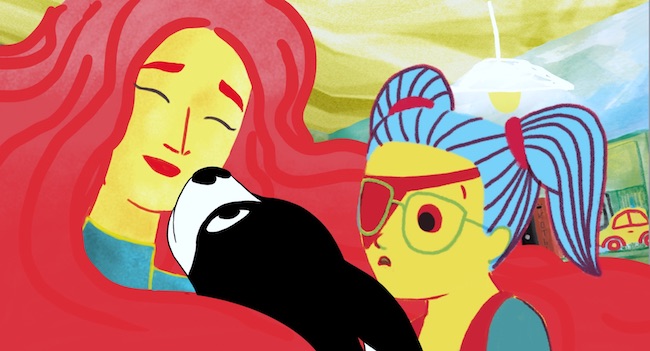
ーーCOVID-19 has affected various communities around the world. How have you been affected? Is there anything you would like to try once the situation settles?
Anca Damian:I am working a lot, and I had to do it harder during the production of my film this year, (the communication was problematic due to isolation, the administration was slow, like in limbo). I stay attentive and focused on things that I think are meaningful because these times are bringing huge changes.
ーーDo you have any ideas or news you can share for your next film?
Anca Damian:I am already finishing my next film, “The Island”, is a fable, a musical comedy, and an upside-down Robinson Crusoe story in nowadays reality.
ーーBefore your film release in Japan, would you like to say anything to your Japanese audience?
Anca Damian:I think that Japanese audience is a great one, there are so many brilliant Japanese animation films, and I hope that my “dog story” for the family, can unfold in Japan a deep philosophical message in its colored beautiful, touching and funny shape.
We are living transforming times, so maybe is the ideal moment of seeing “Marona” The film speaks about humanity with our weakness and dreams, about what is important in life- the purpose of life that is a perpetual love lesson. The values that deeply rooted in the film – the love and compassion, are a solid base while we rethink our lives. “Happiness is in small things” and “life is love lesson” is a good starting point for the humanity’s restart.
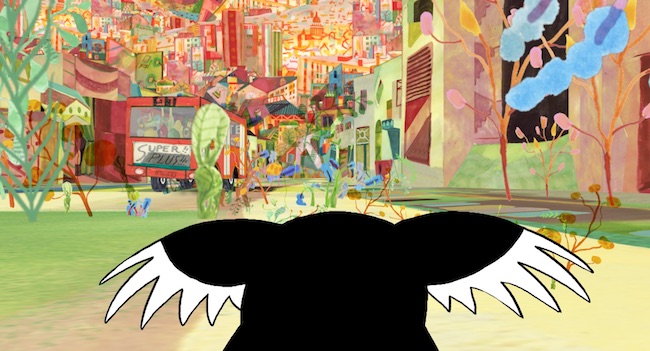
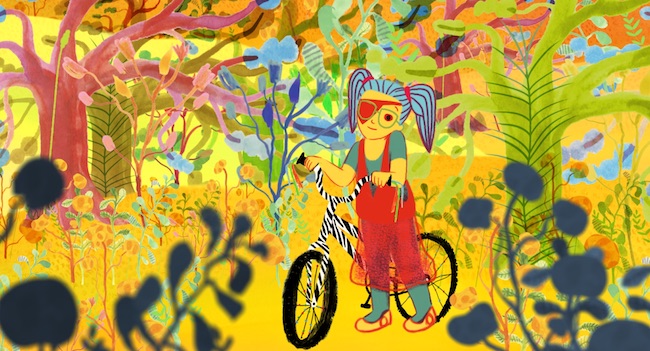
text & edit Ryoko Kuwahara
